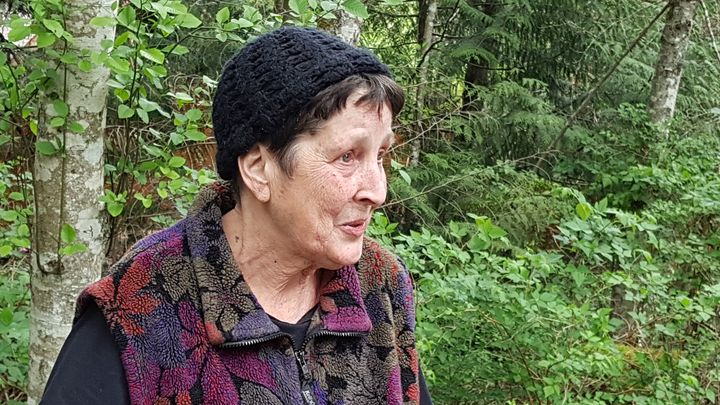
Help Robbie Afford Wi-Fi free housing
Donation protected
Robbie Anderson is a senior who was renovicted as of June 1st. She is extremely electro-sensitive (ES) and requires a Wi-Fi-free cabin/apartment/tiny-house in the greater Victoria area. She has been unable to find one.
She and her friends are convinced that her perfect tiny home exists—ready to go, or waiting to be fixed up—somewhere in the semi-rural surroundings of Greater Victoria. One thing your donation to this page will fund is ads and real-estate services that will put her in contact with the owner of her home-to-be. The second is enough money for that owner (in the expensive current rental market) to be confident of receiving rent for several years to come.
Living cheerfully on a tiny pension income, Robbie lived in her tiny apartment above the garage in a sturdy log house in Metchosin for 17 years. Her good friends know her as a gardener, environmentalist, craftsperson, and astrologer whose friendship and conversation has enriched their lives for many years. They have also watched more or less helplessly as her electro-sensitivity over time has severely reduced her ability to deal with several other serious health challenges.
What is electro-sensitivity?
. . . a condition in which adults and children develop intolerance to radiation from wireless technology devices and infrastructure such as cell phones, Wi-Fi, wireless utility “smart” meters and cell towers and antennas. Once they develop the condition, they experience various symptoms from tingling in the hands and pain in the head when using a cell phone to severe and disabling illness. . . . ES is a medically diagnosable condition. A substantial and increasing body of objective diagnostic tests and guidelines for the diagnosis and management of the condition exist.
- C4ST (Citizens for Safe Technology) https://c4st.org/electrosensitivity/ (italics added)
This web-page lists a large number of scientific articles attesting to the reality of ES. It also says that the most effective ‘treatment’ for ES—the only one really—is to reduce exposure.
Since June, Robbie has been living in a tent on a friend's property up-Island. While this means she is relatively free from Wi-Fi, it is obviously a stop-gap. Robbie still sees her eviction as a blessing in disguise, enabling the possibility of recovering her health in the absence of the constant presence of multiple electrical fields.
She and her friends are convinced that her perfect tiny home exists—ready to go, or waiting to be fixed up—somewhere in the semi-rural surroundings of Greater Victoria. One thing your donation to this page will fund is ads and real-estate services that will put her in contact with the owner of her home-to-be. The second is enough money for that owner (in the expensive current rental market) to be confident of receiving rent for several years to come.
Living cheerfully on a tiny pension income, Robbie lived in her tiny apartment above the garage in a sturdy log house in Metchosin for 17 years. Her good friends know her as a gardener, environmentalist, craftsperson, and astrologer whose friendship and conversation has enriched their lives for many years. They have also watched more or less helplessly as her electro-sensitivity over time has severely reduced her ability to deal with several other serious health challenges.
What is electro-sensitivity?
. . . a condition in which adults and children develop intolerance to radiation from wireless technology devices and infrastructure such as cell phones, Wi-Fi, wireless utility “smart” meters and cell towers and antennas. Once they develop the condition, they experience various symptoms from tingling in the hands and pain in the head when using a cell phone to severe and disabling illness. . . . ES is a medically diagnosable condition. A substantial and increasing body of objective diagnostic tests and guidelines for the diagnosis and management of the condition exist.
- C4ST (Citizens for Safe Technology) https://c4st.org/electrosensitivity/ (italics added)
This web-page lists a large number of scientific articles attesting to the reality of ES. It also says that the most effective ‘treatment’ for ES—the only one really—is to reduce exposure.
Since June, Robbie has been living in a tent on a friend's property up-Island. While this means she is relatively free from Wi-Fi, it is obviously a stop-gap. Robbie still sees her eviction as a blessing in disguise, enabling the possibility of recovering her health in the absence of the constant presence of multiple electrical fields.
Organizer
Lee McLeod
Organizer
Victoria, BC